2. Nata Laminate as Plastic (and Leather) Substitute
3. Plastic rain is the new acid rain
4. The Case of the Goat that Ate Plastic
5 - 24 Ways of Building a "Children of Nature" Culture
6 - The Making of a Plastic Continent
7. We are Living in a Plastic World
8. Giant Plastic Straw Christmas Tree
1. The first plastic was made by Alexander Parkes in 1862, after whom it was named: Parkesine. Actually it was an organic material derived from cellulose. Once heated, it could be molded, retaining its shape when cooled.
2. Soon, the first completely synthetic man-made plastic was formulated by a New York chemist, Leo Baekeland, hence the name Bakelite. This material does not burn, boil, melt, or dissolve under any commonly available acid or solvent. It also retains its shape. Bakelite could be added to almost any material, making the new substance more durable, light, heat-resistant and shatterproof. War machinery and automobile manufacturing made use of this new product to great advantage.
3. Other forms of plastics were then discovered. These include rayon (man-made silk), and cellophane (the first glass-clear, flexible and waterproof plastic). These materials have many uses today.
4. By 1920, the “plastic craze” spread out. Du Pont, one of the leaders of the industry developed nylon, replacing animal hair in toothbrushes. By 1940, the world saw the development of acrylic, polyethylene, and many more polymers, which replaced natural materials such as cotton, fiber, wood and steel.
5. DuPont later introduced Teflon, favored for lining cooking utensils for its acid and heat resistant while its non-stick properties make the utensils easy to clean.
6. Dow, another plastic manufacturer, on the other hand, came up with polyvinylidene chloride, better known as “Saran”, a perfect material for food packaging and storage.
7. Polyethylene, introduced in 1933, is currently the largest volume plastic in the world for making soda and milk bottles, grocery bags, and plastic food storage containers. This is the kind of plastic the goat ate and which made her sick. See Part 4 (below): The Case of the Goat that Ate Plastic.
8. There is virtually no end to the discovery of other forms of plastics. We have plastic putty developed by Velcro. This material is similar to rubber, but has a 25 percent higher rebound power. Its property of not being able to maintain a constant shape is compensated by its high flexibility, stretching many times its length without tearing. Initially, it was used in the manufacture of toys, but now many potential uses are seen.
A World Without Plastics?
Today’s world is incomprehensible without plastics. Plastics contribute to our health, safety and peace of mind. They are part of our dwellings, cars, toys, appliances, even body parts such as heart valves and prosthetics. There are countless uses in all aspects of our lives.
On the other hand, the biggest dilemma with plastics is its proper disposal. It has become a major waste handling challenge all over the world. While we see its virtually endless uses, we are also witness to its accumulation exacerbated by its inability to biodegrade. As a result, its rate of accumulation is alarmingly enhanced, creating an issue of concern to environmentalists, and citizens of the world.
1. Plastic sack which has replaced the jute or gummy sack
2. Nylon rope and filament, which have replaced Manila hemp and cotton threads. Filament is used for fish net.
3. Plastic simulated leather used in shoes, canvas and bags. There are other kinds of artificial leather.
4. Styropore for packing and containers, replacing banana leaves, straw and paper.
5. Foam mattresses, slippers and furniture. Natural sponge is now a rare commodity. Foam has replaced coconut coir and kapok.
6. Plastic bottles, jars and containers. Glass is still the best material when it comes to food storage.
7. Plastic sachets, bags and wrappers have largely taken over the use of paper and cardboard.
These plastic materials are familiar to us. We see them at home and on store shelves. They are evidences of our modern, throw-away culture.
While gathering the garbage to help clean up the shore, my students found trapped fish fry in plastic bags. Wanting to find out how this happened, we looked for clues.
We have seen plastic materials stuck at the bottom of reefs preventing juvenile seaweeds from developing. Plastics also trap the polyps of corals, and microsopic zooplankton eliminating a major food source for marine life.
That evening, along the shores of Morong, we asked ourselves what each can do to rid the shores of plastics. While we reflected in silence, the tranquil waves washed ashore a plastic bottle.
Here are some things we can do with plastics.
1. Re-use plastic bags and bottles at home. Remember that plastics are durable. Be sure to clean them properly before using.
4. Keep plastic materials away from your bedroom. As plastics age, they emit gaseous substances which may cause allergy, asthma and other ailments when inhaled.
6. Be part of a community environmental project. Attend seminars and workshops that talk about the environment. Read about ecology; learn to be a leader in this area; know about re-cycling, values formation, and the like. Be an ecologist yourself.

The case of the goat that ate plastic, and fish fry trapped in a plastic bag can spur us to develop a second generation of biodegradable plastics. This is the essence of good stewardship of this planet, for our own good, as well as for those who will follow us. ~
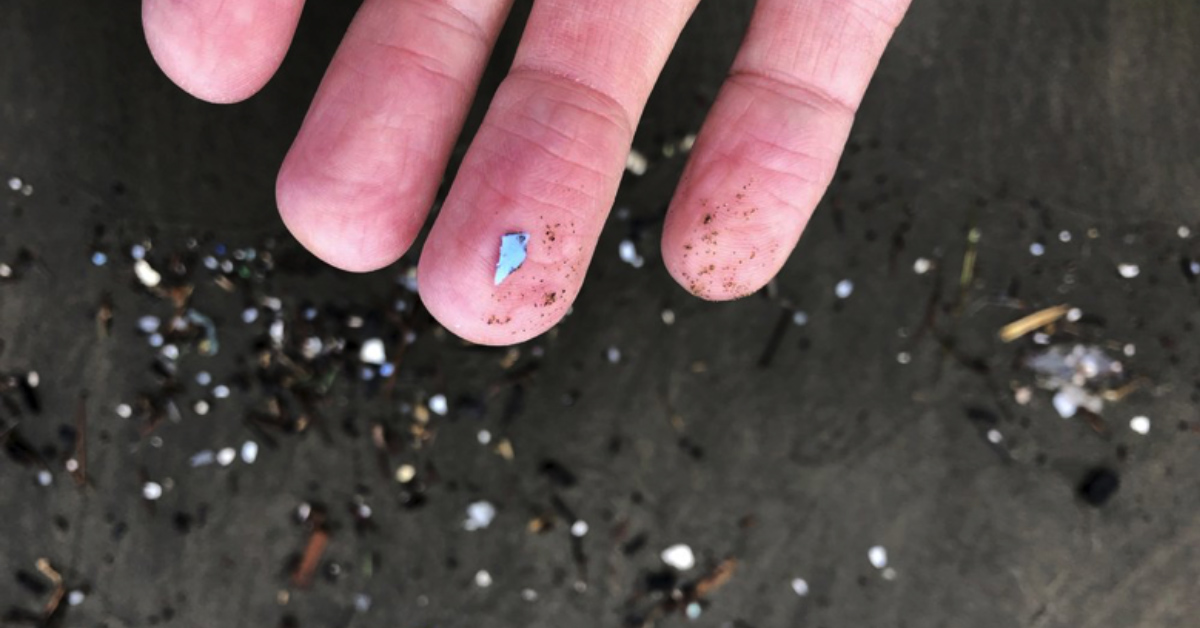
Plastic pollution is an urgent and global problem. Most of the environmental attention to date has been focused on household and packaging waste. But scientists have found that tiny fragments known as microplastics make up significant amounts of ocean plastic pollution. Scientists have recently been scrambling to find solutions to deal with our growing microplastics problem. Microplastic debris found on Depoe Bay, Oregon in January 2020. Photo credit: Andrew Selsky/Associated Press. This time, they turned to tiny bacteria for help.
Microbiologists at the Hong Kong Polytechnic University (PolyU) devised a sustainable way to remove polluting microplastics from the environment.
Their partners in crime are bacteria called Pseudomonas aeruginosa. Capable of grouping microplastics floating around in wastewater, these microbe nets trap microplastics and sink them. The plastic blobs can then be disposed of or recycled.
Other research efforts include exploring different novel materials as filters to remove microplastics before they reach large water bodies. Nanocellulose structures are highly effective in capturing extremely small microparticles that our eyes can’t see.
Researchers at the VTT Technical Research Centre of Finland envision that these inexpensive components could be installed directly at the point of microplastic generation. This way, the pesky particles won’t be able to make it to important waterways, where removal would be many times tougher.
But wait… How are microplastics different from the ubiquitous plastic products we use daily?We have seen horrific posts related to plastic waste circulating the web. While these dangers are visible to the naked eye, some are left undetected until fairly recently – microplastics.
With sizes ranging from as small as one-tenth the width of human hair, to twice the size of fine beach sand, these microparticles are so small that they can be carried by the wind.
Recent studies highlight the seriousness of this issue. 1000 metric tons – easily the weight of 120 million plastic bottles – rained on protected areas across western US. 84% of microplastics originate from road sources, while the rest come from agricultural dusts and oceans.

Plastic materials (think your bags and bottles) left out in the environment disintegrate gradually into smaller and smaller pieces.
Even doing your laundry releases microplastics – tiny microfibres slough off your synthetic clothes and get flushed to wastewater treatment plants.
Researchers also accidentally discovered huge numbers of tiny microplastic specks in their plastic container while prepping their lunch.
Tyres driving over roads break down deposited plastic particles into finer microplastics, enabling them to be launched back into the atmosphere, just like how oceans recirculate microplastics.One-way ticket around the globe.
What’s even more disconcerting is that microplastics can be transported to distant and pristine locations such as Antarctica, despite being so far away from actual sources of microplastics.
This just shows that microplastics are already spiraling through Earth’s recirculation system. And because of their astounding chemical longevity, microplastics spend many years cycling through different circulatory systems such as air, land and sea, ultimately ending up somewhere far from where they came from.
You could be taking in a deep breath of “fresh” air at Joshua Tree National Park, while tiny flakes of acrylic polymer – that could have come from someone’s laundry in Japan – land imperceptibly on your nose.Effects on humans still unclear.Ingestion of microplastics by small creatures lead to blockages in their intestinal tract. The ingested plastics could move up the food chain, leading to a plastic accumulation in organisms at the top of the food chain, akin to heavy metal bio-accumulation.
Some sea creatures exposed to microplastics even displayed difficulties in growing, severely affecting their ability to survive.
You’re also likely to be eating microplastics every day without even noticing it.
Microplastics were revealed in the placentas of unborn babies just a couple of months ago, most probably shed when shaking up plastic baby bottles filled with hot baby formula.
Assuming that the microplastics would somehow hamper foetal growth and cause long-term damage to its immune system, the researchers have yet to determine their exact health impacts on the human body.
But it’s reasonable to assume that having tiny bits of plastic lodged in your lungs or in your unborn child are hardly good things. Eliminating microplastics requires global effort.An overall picture on the consequences of microplastics to us and the ecosystem in general is still unclear. But such repercussions are inescapable in the immediate future.
Returning to the pre-plastic era is unimaginable, unless we come up with materials as great as plastic, but not as environmentally upsetting.
Perhaps one of the most effective ways to end this microplastic scourge, aside from inventing innovative methods of removal, is to cut out single-use plastics.
Just like how we cast a dry spell on acid rain, we too, can put an end to this toxic microplastic cycle. ~
First of all, let’s study the eating habit of this herbivore. When feeding, it pulls and tears off at anything its teeth come in contact with. It prefers seedlings and succulent tissues. But when food is scarce it feeds on older leaves, stems and roots. Goats in town may even devour wrappers of sweets and kitchen refuse. There are cases ingested plastics can cause slow death to the animals.
I gave a pet kid to my youngest son when he was small. He would allow the animal to lick his fingers. I discovered tiny lacerations inflicted by the developing milk teeth of his pet. “Was it not painful?” I asked. Leo told me it was only after some time that he felt tingling sensation of pain. I believe that the saliva of a goat contains anesthesia, which could be the thing old people call “hot.” Is this the active principle that kills plants?
But plants have their ways of defending themselves, such as the presence of thorns (e.g., Mimosa or makahiya), high level of impregnated silica (e.g., Imperata cylindrica or cogon), and obnoxious odor or taste (e.g., Lantana or bangbangsit Ilk). There are plants that respond to injuries caused by the feeding of animals. They produce poison to discourage, if not kill, the voracious feeder.
This is a classical case. In the African Savannah a species of acacia is the favorite of browsing animals like the giraffe. When the acacia trees are threatened by overgrazing, they send signals like pheromones to warn each other, including the unaffected acacia trees, to produce higher level of tannic acid, similar to mimosin in ipil-ipil. This substance, other than being unpleasant to the taste, is extremely acrid and may cause discomfort to the feeder.
I had an experience at home when I was a farmhand which is quite similar to this case. Goats after the rice harvest are usually left stray in the field but now and then they trespass into backyards and gardens. I noticed our neighbor's goat coming over to browse on wild patani (Phaseolus lunatus). My dad simply didn't mind, to think that entire borders are covered with the viny plant. Then the goat stopped visiting us.
We went to our friendly neighbor and saw the goat, its stomach bloated as if it were in its last stage of pregnancy. Tata Melecio had to slaughter the animal. We found out that its stomach was stuffed with undigested patani leaves, and emitting the characteristic bean odor which I found in later years to be that of tannic acid.
Did the patani plant, like the acacia tree, produce "toxin" to defend itself from excessive feeding by the animal? If this is so, then nature extends to both plants and animals protective mechanisms through the production of chemical compounds that directly confront extreme threat - indeed an effective means of survival not only to the organism, more so, to the species.
But this does not adequately answer why plants bitten by goats are likely to die. I attribute this observation to the manner goats feed.
Firstly, uprooted plants have little chance to recover especially in extreme dry season.Secondly, plants in general die when their biomass above the ground is severed, even if their roots remain intact. It is because the roots will subsequently starve for lack of manufactured food coming from the leaves.Thirdly, goats prefer plants in the flowering and fruiting stages, thus depriving the plant from producing offspring, even those that reproduce vegetatively.And lastly, in the absence of fresh feeds, goats forage on the dormant parts of plants in summer (aestivation), and in winter (hibernation), thus preventing the plants to re-emerge come growing season.
Reference: Living with Folk Wisdom, AVRotor UST
Part 6. The Making of a Plastic Continent

The main Plastic Vortex as big as the state of Texas - and growing - lies north of Hawaii off the coast of Canada and the US. "Islands" of plastics coalesce into the vortex. Dutch scientists propose to convert the floating debris into a livable environment.
NOTE: There are other gyres, three in the south hemisphere, all potential spawning grounds of floating garbage.
- Refuse
- Reduce
- Reuse
- Refill
- Repair
- Refit
- Recycle
- Repeat
- Reform (our ways)
- Revere (Reverence for Life)
to a Messiah when the world seeks for peace and rest;
call it a tree of Conscientization* in shrouded light and truth,
in a modern world deluged with technology and progress.

Call it waste turned beautiful by small and innocent hands
into a thousand-and-one stars on a pylon rising to the sky
what we grownups simply throw away and pollute the earth,
and the manufacturers reap profits while the young ones cry.
Call it Christmas Tree, call it tree of nativity and offering,
to a Messiah when the world seeks for peace and rest;
call it a tree of Conscientization* in shrouded light and truth,
in a modern world deluged with technology and progress. ~
Lesson on former Paaralang Bayan sa Himpapawid Dr Abe V Rotor and Ms Melly C Tenorio 738 DZRB AM, 8 to 9 evening class, Monday to Friday.
Relate these events with the following:
1. Pope Francis Laudato Si (Praise Be), a call to save the Earth2. Canada exporting trash to the Philippines3. Earth Summits - review and prospects4. Culture of Consumerism5. Waste management models6. Autotoxicity - myth of fact?7. Global Warming - Erratic Climate and Weather8. Rising of the Sea Level - Global Flooding9. Global Leadership challenge10. Personal concern and action
Part 9 - The 7 Different Types of Plastic
The world is full of plastics. Whether you realize it or not, practically everything you see and use on a daily basis is entirely or partly plastic material. Your television, computer, car, house, refrigerator, and many other essential products utilize plastic materials to make your life easier and more straightforward. However, all plastics are not made alike. Manufacturers utilize a variety of different plastic materials and compounds that each possess unique properties.
Below is 7 of the most popular and commonly used plastics: Acrylic or Polymethyl
- Methacrylate (PMMA)
- Polycarbonate (PC)
- Polyethylene (PE)
- Polypropylene (PP)
- Polyethylene Terephthalate (PETE or PET)
- Polyvinyl Chloride (PVC)
- Acrylonitrile-Butadiene-Styrene (ABS)
Let’s take a look at each of these distinctive plastics in more detail.
1. Acrylic or Polymethyl Methacrylate (PMMA)
Well-known for its use in optical devices and products, acrylic is a transparent thermoplastic used as a lightweight, shatter-resistant alternative to glass. Acrylic is typically used in sheet form create products such as acrylic mirrors and acrylic plexiglass. The transparent plastic can be made colored and fluorescent, abrasion-resistant, bullet-resistant, UV-tolerant, non-glare, anti-static and many more. In addition to being than glass and polycarbonate sheeting, acrylic is seventeen times more impact resistant than glass, easier to handle and process, and has endless applications.
2. Polycarbonate (PC)
Tough, stable, and transparent, polycarbonate is an excellent engineering plastic that is as clear as glass and two hundred and fifty times stronger. Thirty times stronger than acrylic, clear polycarbonate sheets are also easily worked, molded, and thermo-formed or cold-formed. Although extremely strong and impact-resistant, polycarbonate plastic possesses inherent design flexibility. Unlike glass or acrylic, polycarbonate plastic sheets can be cut or cold-formed on site without pre-forming and fabrication. Polycarbonate plastic is in a wide variety of products including greenhouses, DVDs, sunglasses, police riot gear, and more.
3. Polyethylene (PE)
The most common plastic on earth, polyethylene can be manufactured in varying densities. Each different density of polyethylene gives the final plastic unique physical properties. As a result, polyethylene is in a wide variety of products.
Here are the four common polyethylene densities: Low-Density Polyethylene (LDPE)
This density of polyethylene is ductile and used to make products like shopping bags, plastic bags, clear food containers, disposable packaging, etc. Medium-Density Polyethylene (MDPE)
Possessing more polymer chains and, thus, greater density, MDPE is typically in gas pipes, shrink film, carrier bags, screw closures, and more. High-Density Polyethylene (HDPE)
More rigid than both LDPE and MDPE, HDPE plastic sheeting is in products such as plastic bottles, piping for water and sewer, snowboards, boats, and folding chairs. Ultra High Molecular Weight Polyethylene (UHMWPE)
UHMWPE is not much denser than HDPE. Compared to HDPE, this polyethylene plastic much more abrasion resistant due to the extreme length of its polymer chains. Possessing high density and low friction properties, UHMWPE is in military body armor, hydraulic seals and bearings, biomaterial for hip, knee, and spine implants, and artificial ice skating rinks.
4. Polypropylene (PP)
This plastic material is a thermoplastic polymer and the world’s second-most widely produced synthetic plastic. Its widespread use and popularity are undoubted because polypropylene is one of the most flexible thermoplastics on the planet. Although PP is stronger than PE, it still retains flexibility. It will not crack under repeated stress. Durable, flexible, heat resistant, acid resistance, and cheap, polypropylene sheets are used to make laboratory equipment, automotive parts, medical devices, and food containers. Just to name a few.
5. Polyethylene Terephthalate (PETE or PET)
The most common thermoplastic resin of the polyester family, PET is the fourth-most produced synthetic plastic. Polyethylene Terephthalate has excellent chemical resistance to organic materials and water and is easily recyclable. It is practically shatterproof and possesses an impressive high strength to weight ratio. This plastic material is in fibers for clothing, containers for foods and liquid, glass fiber for engineering resins, carbon nanotubes, and many other products that we use on a daily basis.
6. Polyvinyl Chloride (PVC)
The third-most produced synthetic plastic polymer, PVC can be manufactured to possess rigid or flexible properties. It is well-known for its ability to blend with other materials. For example, expanded PVC sheets are a foamed polyvinyl chloride material that is ideal products like kiosks, store displays, and exhibits. The rigid form of PVC is commonly in construction materials, doors, windows, bottles, non-food packaging, and more. With the addition of plasticizers such as phthalates, the softer and more flexible form of PVC is in plumbing products, electrical cable insulation, clothing, medical tubing, and other similar products.
7. Acrylonitrile-Butadiene-Styrene (ABS)
Created by polymerizing styrene and acrylonitrile in the presence of polybutadiene, ABS is robust, flexible, glossy, highly processable, and impact resistant. It can be manufactured in a range of thicknesses from 200 microns to 5mm with a maximum width of 1600mm. With a relatively low manufacturing cost, ABS plastic sheeting is typically used in the automotive and refrigeration industries but is also in products such as boxes, gauges, protective headgear, luggage, and children’s toys. ~
10. Let's Enhance Religious Practices Favorable to Health and Environment (Former title: Save the Trees on Palm Sunday)

5. Take communion on your palm, never with your tongue. Epidemic such as H1N1 (flu) and COVID-19 can be spread this way.
6. Holding hands in prayer is discouraged also for health and sanitation, keeping one's privacy in reverence, notwithstanding.
8. Paying last respect to the dead should be done with extreme care, especially if the cause of death is highly contagious like COVID-19, Ebola and SARS. Remember the tragic death of some religious sisters who contacted Ebola from their dead colleague?
9. Don't walk on your knees to the altar; kneeling in prayer is enough. Be kind to your knee tendon and kneecap; knee injury may incapacitate you permanently. "You re not growing younger," an elder advised me. Let's learn from athletes who retired early because of knee injury.
10. Removing shoes before entering a house of worship is an expression of respect and reverence, as well as for purposes of maintaining sanitation in the place. Any footwear carries dirt and germs, and may be teems with bacteria and fungi from long and intimate wear. This practice may not be as strict in Catholic churches as in Muslim mosques and Buddhist temples. Removing shoes in other places like prayer rooms, wakes, even homes, are becoming a popular practice.
11. Many religious ceremonies are without the use of incense**. Incense smoke and scent usually produce a pleasant and calming effect to the faithful. It is also an effective fumigant against flying and crawling insects. Its repellant effect helped keep down the spread of bubonic plague during the Middle Ages. The Plague bacillus, Yersinia pestis, which killed a third of the population in the known world is carried by flea (Xenopsylla cheopis) that resides in rats. Incense comes in various preparations and offerings, candle sticks among the most common. Burning candles have similar but lesser effects. To get rid of flies around food; one or two burning candles keep them at bay. Try it.
- Don't use young (bud) leaves of coconut for palaspas. You will kill the tree.
- Conserve the Oliva or the Cycads (Cycas spp). They are "living fossils" which lived in the dinosaur era, and now endangered as species.
- Don't strip the young leaves of buri and anahaw palms. They are now in the list of threatened species. The buri (Corypha elata) is the largest native palm species found in the Philippines, with trunks attaining a diameter of 1 meter, height of 20 meters, and with large fan-shaped leaves from which buri braids, raffia, and buntal hats are made.
- Get only the mature leaves - never the young leaves or bud. Get only a frond or small leaf, or part of it. Don't be wasteful.
- There's no need for each faithful to carry palaspas. One for a whole family is enough.
- Get substitute plants that are not ecologically endangered and economically threatened. (Examples: MacArthur's Palm, palmera, Areca or betel nut, bunga de Jolo, and from hundreds of non-palm plants from bamboo to ground orchid and fern. Use mature or older leaves - never the young leaves and buds.
- Seek advice from your community and religious leaders, and environmentalists.
5 Benefits of Religious Practice for Your Health
1. It reduces the risk of death2. Lower rates of depression3. Religious experiences provide a cognitive framework for dealing with traumas4. Religiousness is better for mental health than sports among older people5. It keeps young people away from alcohol and drugs
1. On Palm Sunday trees are stripped of their buds, leaves and stems. This is detrimental to the environment especially in summer when plants face tight water regime.
2. Fasting is cleansing, it helps the body stop the accumulation of unwanted substances such as cholesterol, and allows the body to eliminate toxic materials.
3. Retreat and reflection is therapy, helps the mind, body and spirit to release tension and do away with the effects of stress.
4. Abstinence conserves animal population especially during the lean months, conserving breeding stocks - like seeds (binhi) – in order to multiply in the next season. Abstinence protects us from infectious animal diseases such as anthrax.
5. To some religions pork is banned. Pork is a carrier of known parasites such as tapeworm, hookworm, and Ascaris. It is known to contribute to obesity and many ailments.
6. Ancient religions regard certain places and trees sacred, thus enhancing their conservation. Such worship was replaced by later religions, and modern living style, thus losing their protection.
7. The washing of feet is not only ritual, it is also sanitation, getting rid of germs and preventing them to spread.
8. Walking on knees, a form of penitence, usually along the aisle to reach the altar, is harmful to the knee joint and cap (patella).
9. Self inflicting of wounds imitating the scourging at the pillar, practiced by flagellants may lead to loss of blood, serious infection, and even death.
10. Communal holy water may become a breeding place of vermin and germs causing ailments and epidemic diseases.
12. Kissing or touching the dead is discouraged. Diseases like COVID-19, Ebola, SARS, MERS-CoV must be strictly quarantined.~
- Removing shoes and slippers before entering a temple of worship
- Viewing the bright sky and even the sun - to witness a miracle
- Wearing robes and habits of holy persons
- Wearing veil when attending mass or any ritual inside the church
- Baptism by immersion in a pool or river
- Offering flowers at the altar, especially in the month of May
- Walking barefoot as penitence, usually under the sun on rough road..
- Actual crucifixion on Good Friday as "ultimate penitence"
- Joining a huge religious assembly or procession such as the Black Nazarene.
- Kissing icons for intercession or expression of reverence. ~
Dr Abe V Rotor,
"Man, being the superior organism, has not only won over his rivals - all organisms that constitute the biosphere. He has also assaulted Nature."
Frantic exploitation of natural resources through illegal logging operations, followed by slash-and-burn agriculture (kaingin), has brought havoc to the Philippines in the past century. The detrimental results are measured not only by the denudation of once productive forests and hillsides, but also destruction through erosion, flood, drought and even death.
An example of this kind of ruination brought about by abuse of nature is the tragedy in Ormoc City where floodwaters cascading down the denuded watershed, killed hundreds of residents and countless animals. It took ten years for the city to fully recover. Ironically, before the tragedy, Ormoc, from the air, looked like a little village similar to Shangrila, a perfect place for retirement.
Decline in Carrying Capacity
A land area designed by nature to sustain millions of people and countless other organisms, was touched by man and we are now paying the price for it. Man removed the vegetation, cut down trees for his shelter and crafts, and planted cereals and short-growing crops to get immediate returns. He hunted for food and fun, and in many ways, changed the natural contour and topography of the land.
Following years of plenty, however, nature reasserted itself. Water would run unchecked, carrying plant nutrients downhill. On its path are formed rills and gullies that slice through slopes, peeling off the topsoil and making the land unprofitable for agriculture. Since the plants cannot grow, animals gradually perish. Finally, the kaingero abandons the area, leaving it to the mercy of natural elements. It is possible that nature may rebuild itself, but will take years for affected areas to regain their productivity, and for the resident organisms once again attain their self-sustaining population levels.
There are 13.5 million square miles of desert area on earth, representing a third of the total land surface. This large proportion of land may be man-made as history and archeological findings reveal.
Lost Civilizations
Fifteen civilizations, once flourished in Western Sahara, Tunisia, Libya, Egypt, the Sinai desert, Mesopotamia, and the deserts of Persia. All of these cultures perished when the people of the area through exploitation, forced nature to react. As a consequence, man was robbed of his only means of sustenance.
History tells us of man’s early abuse of nature in the Fertile Crescent where agriculture began some 3000 years ago. Man-made parallel canals joined the Tigris and Euphrates Rivers to irrigate the thirsty fertile valley. In the process, the balance of Nature was overturned when the natural drainage flow was disturbed. Because the treaty was violated, nature revenged. The canal civilization perished in the swamps that later formed. The sluggish water brought malaria and other diseases causing untold number of deaths and migration to the hinterlands. Among its victims was Alexander the Great.
Carthage had another story. Three wars hit Carthage, known as the Punic Wars. On the third one, the Romans plowed through the city, ending reign of this erstwhile mercantile power, and removing the threat to the Roman economy. After the conquest, the Romans pumped salt-water inland and flooded the fertile farms. Today, Carthage exists only in history and in imagination of whoever stands atop a hill overlooking what is now a vast desert.
Omar Khayyam, if alive today, cannot possibly compose verses as beautiful as the Rubaiyat as written in his own time. His birthplace, Nishapur, which up to the time of Genghis Khan, supported a population of 1.5 million people, can only sustain 15,000 people today. Archeologists have just unearthed the Forest of Guir where Hannibal marched with war elephants. The great unconquerable jungle of India grew from waterlogged lowland formed by unwise irrigation management.
It is hard to believe, but true that in the middle of the Sahara desert, 50 million acres of fossil soil are sleeping under layers of sand awaiting water. Surveyors found an underground stream called the Albienne Nappe that runs close to this deposit. Just as plans were laid to “revive” the dead soil by irrigation, the French tested their first atomic bomb. Due to contamination, it is no longer safe to continue on with the project.
The great Pyramids of Egypt could not have been constructed in the middle of an endless desert. The tributaries of the Nile once surrounded these centers of civilization. Jerusalem appears today as a small city on a barren land. It may have been a city with thick vegetation. This was true of Negev and Baghdad.
Need of a Conservation Program
For the Philippines, it is high time we lay out a long-range conservation program to insure the future of the country. This plan should protect the fertility of the fields, wealth of the forests and marine resources, in order to bring prosperity to the people. As of now, the country is being ripped apart by erosion and floods due to unscrupulous exploitation by loggers and kaingeros.
It is only through proper management and effective conservation, such as reforestation, pollution control, erosion control, limited logging, and proper land use, that we can insure the continuity of our race. All we have to do is to keep ourselves faithful to the treaty between nature and man. ~


 15. Our children become new heroes – heroes for the environment, martyrs for Mother Earth. Heaven is in a regained Paradise on earth. A universal faith, irrespective of denomination, is shaping up fast.
15. Our children become new heroes – heroes for the environment, martyrs for Mother Earth. Heaven is in a regained Paradise on earth. A universal faith, irrespective of denomination, is shaping up fast.18. Our children will realize that optimism will remain the mainstay of human evolution, rising above difficulties and trials. Hope is ingrained in the human brain that makes vision rosier than reality. Anxiety and depression will continue to haunt, in fact accompany progress, but these all the more push optimism up and ahead.
Lesson on TATAKalikasan with Ateneo de Manila University 87.9 FM Radyo Katipunan
The World Bank estimates that the Philippines use an overwhelming 163 million pieces of sachets per day. A staggering 2.3 million tons of plastic waste are generated in the country annually. Unfortunately, only 28% of key plastic resins are being recycled while the rest are simply discarded. So, where does the remaining 72% of these plastics go? To find it, one no longer needs to go to the nearest scrap shop but they can simply open their refrigerators.
In celebration of the National Science and Technology Week (NSTW) 2022, the National Research Council of the Philippines made the call to increase awareness in the growing threat of microplastics and plastics on food security, environment, and health by featuring NRCP-funded Projects on plastics in the marine environment and microplastic contamination among marine species.
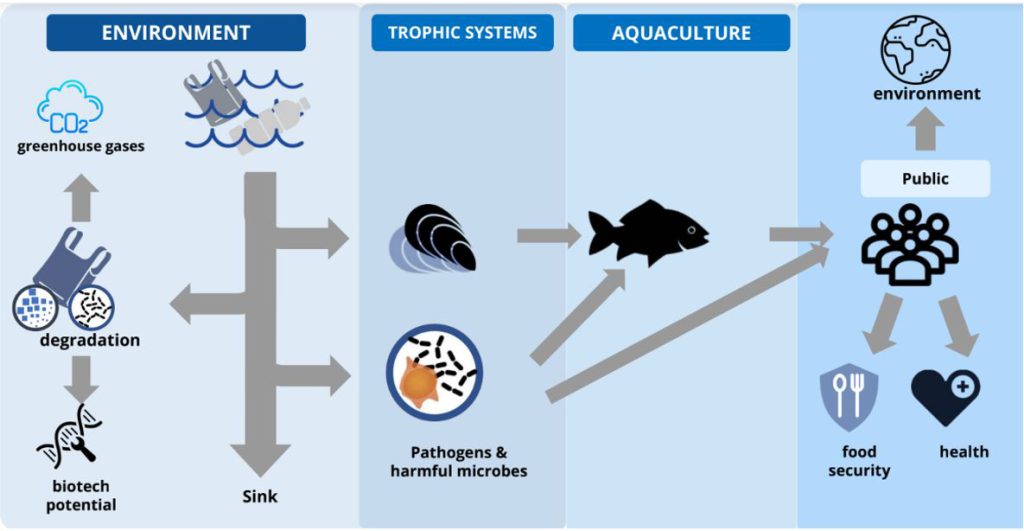
Despite the convenience and other benefits brought about by the invention of plastics, shown above is the general flow of how these materials negatively affect our environment, food security, and health. A presentation of NRCP-funded project titled, Marine Microbes and Plastic Debris: Research Status and Opportunities in the Philippines by Balik Scientist and UP Diliman Associate Professor in Marine Science Institute Dr. Deo Florence Onda, the plastic-microbe interactions in marine environments and its implications with the unresolved plastic pollution issues in the country was discussed.


Dr. Onda’s team sampled 240 mussels in eight (8) study sites such as the wet market in Marikina, fish port in Navotas, fish landing center in Bacoor, riverside in Obando, aquaculture farms in Antique, Bayabay, Macelelon, and Bicol. Dismally, 100% of the samples have tested positive for microplastics. Most of the plastics found in their study are type 4 plastics such as thin plastic wraps, labels, packaging, foamed fragments, fishing lines, nets and ropes, bags, straws, and pipettes.
The Balik Scientist speaker, Dr. Onda, reiterated that there is a need to support and strengthen plastic research in the Philippines given the implications of plastics and microplastics in various aspects of our lives.
Through the NRCP-funded project titled, Assessment of plastic debris and of microplastics in different specimen (fish, sediment, water, benthic organisms) in selected aquatic environments in Mindanao and exploration of relative stress biomarkers, Dr. Capangpangan and his research team discovered that “microplastics are found in cultured and in wild and in nekton and benthos organisms.”
Of the 383 extracted particles collected from 30 bangus samples in Butuan and Nasipit Fish Cage, 235 were confirmed to be microplastics. Meanwhile, out of 163 extracted particles from 135 individual mud clams in mangrove stations along Butuan Bay, 30 were also confirmed as microplastics.
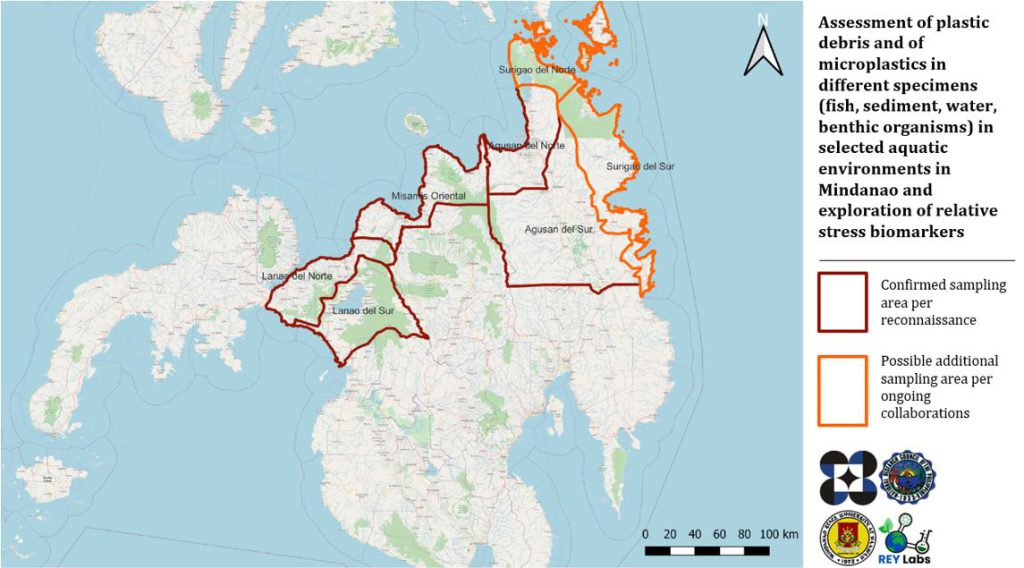
DOST Secretary Dr. Renato U. Solidum, Jr. stated the importance of the NRCP’s NSTW webinar as this is a step to ensure that while we profit from our natural resources, we should also ensure its sustainability for the benefit of Filipinos in the future.

Indeed, “Big threats come in small particles” National Research Council of the Philippines’ Executive Director Dr. Marieta Bañez-Sumagaysay emphasized as she closed the hybrid event.
Written By: Regine Pustadan, Information O THE GROWING THREAT OF MICROPLASTICS AND PLASTICS. Acknowledgement with thanks, Dr AV Rotor. For radio broadcast reference only on TATAKalikasan AdMU
-------------------------

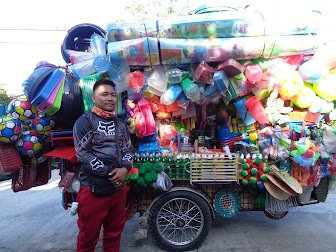





































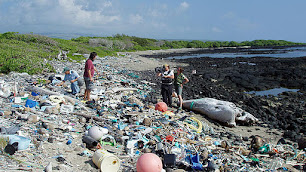




















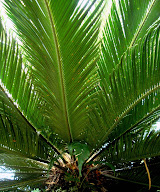









No comments:
Post a Comment